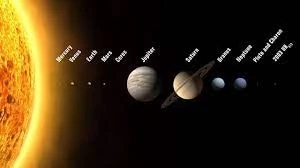Introduction to the Solar System
The solar system is a captivating and intricate cosmic arrangement comprising the Sun, planets, moons, asteroids, comets, and other celestial objects. It is a vast expanse that has intrigued humanity for centuries, serving as the focal point of astronomical exploration and scientific inquiry.
The Sun: The Central Star
At the heart of the solar system lies the Sun, a dazzling, luminous sphere of hot plasma, exerting gravitational force that governs the orbits of all other celestial bodies. It accounts for approximately 99.8% of the solar system's mass.
Planets: The Celestial Wanderers
The planets orbit the Sun in precise paths, each possessing distinct characteristics. From the rocky terrains of Mercury and Mars to the gaseous giants like Jupiter and Saturn, each planet offers a unique glimpse into the diversity of the cosmic neighborhood.
Moons: Satellites of Planets
Numerous moons orbit around the planets, acting as their natural satellites. For instance, Jupiter boasts over 79 known moons, with Ganymede being the largest moon in the entire solar system.
Asteroids and Comets: Cosmic Remnants
Asteroids and comets are remnants of the early solar system. Asteroids, primarily found in the asteroid belt between Mars and Jupiter, vary in size and composition. Comets, icy bodies, originate from the Kuiper Belt and Oort Cloud, often displaying breathtaking tails when near the Sun.
Nebular Hypothesis: Birth of the Solar System
The prevailing theory explaining the origin of the solar system is the Nebular Hypothesis. It suggests that a vast cloud of gas and dust, known as the solar nebula, collapsed under gravitational forces, leading to the formation of the Sun and protoplanetary disk.
Planet Formation: From Dust to Worlds
Over millions of years, dust particles within the protoplanetary disk collided and clumped together, gradually forming planetesimals. Through accretion and gravitational attraction, these planetesimals merged to form the planets, moons, and other celestial bodies.
Exploration and Scientific Research
The solar system serves as a cornerstone for space exploration and scientific discoveries. Missions such as NASA's Voyager and Cassini have provided invaluable insights into the outer reaches of our cosmic neighborhood.
Impact on Life on Earth
Understanding the solar system's dynamics has significant implications for life on Earth. The Sun's energy drives climate patterns, sustains life through photosynthesis, and influences various natural phenomena, including solar flares and space weather.
Conclusion
In conclusion, the solar system stands as an intricate marvel, showcasing the wonders of the cosmos. Its sheer diversity, the interplay of celestial bodies, and the ongoing quest for exploration continue to captivate our imagination, fostering a deeper understanding of our place in the universe.



